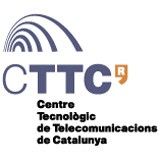
-
StatusCompleted
-
Status date2020-06-10
-
Activity Code1A.104
This project is aimed at investigating the applicability of Artificial intelligence and Machine learning concepts and techniques in the field of satellite communications. In particular, it defines and analyses the applicability in a set of use cases (addressing any phases in the lifecycle of satellite communication systems). The use cases cover existing problems, and new concepts that could eventually enable new capabilities for satellite communication systems.
Business Understanding
The initial selection of the cases had to generate a selection of cases that can benefit from the application of a machine learning technique, while covering the range of activities in the satellite communications industry.
Selecting the cases to take forward to proofs of concept had to allow for several factors including the data that was available to the program, and the ability to get meaningful performance measurements.
Accessibility and integrity of the data.
Enough data to train the model, and then test the model and get measurable performance had to be available.
The data must be applicable to the use case that is being studied, without changing or blurring the focus of the case.
Current systems:
- Typically use thresholds or alarms in downstream systems to detect that there is an anomaly, then rely on the operators expertize to identify the root cause.
- Typically rely on rules or expertise for configuration.
- Typically require strong human intervention.
AI/ML may help improve performance and utilization of a system by:
- Monitoring data more effectively in real time than current systems allowing
- problems to be identified earlier than with existing systems and action taken.
- the identification of potential root causes
- Identifying optimal configurations for traffic conditions and predicting traffic loads to allow reconfiguration before quality thresholds are breached.
Three proofs of concept are developed
- Automatic interference detection. This use of deep learning to automatically identify the presence of an interferer in an RF signal, even though it is a cross-polarization interference. Two metrics based on the signal statistics reconstruction are monitored for changes sufficient to suggest an interferer is present.
- Flexible payload configuration in the presence of interferers. Two ML techniques are combined to generate a payload configuration that will mitigate the effect of an interferer while maintaining the highest amount of user traffic. The reconfiguration includes selecting one modified beam from several options, and resources reallocation among the satellite payload.
- User demands (congestion) prediction. Traffic clustering by type and time of day is used to improve the performance of a prediction algorithm.
Other use cases that were identified for future work include anomaly detection in satellites and interference classification.
The architecture for each proof of concept is described separately.
For automatic interference detection, the model would monitor the output from existing spectrum monitoring systems and raise alarms in real time when a probable interferer is detected.
For flexible payload configuration the model would provide an optimal payload configuration to mitigate the effect of an interferer in near real time after the interferer is identified. The payload configuration and the modelled traffic may be displayed to an operator before being implemented.
For the user demands (congestion) prediction the model would provide an operator the predictions needed to effectively utilize congestion mitigation techniques to address upcoming traffic loads.
The program starts by identifying and describing of nine Use Cases within the satellite communications industry.
Three are selected to develop into models for proofs of concept. Detailed plans are made for the acquisition of the necessary data and the implementation of the models.
In the third phase those models are built, the data is converted as required and used to train and test the models. The performance of the models is measured and assessed.
The final stage reports on the program and provides conclusions and recommendations for future work.
The project identified developed and described nine use cases with applications across the satellite and telecom industry. From these, three (Interference identification, flexible payload configuration and congestion prediction) were selected and models were developed and tested for proofs-of-concept.
The models were trained and performance tested using data obtained from operators.
Results from all three cases showed benefits of application of ML/AI techniques:
- The interference detection model was able to find 4 of 5 interferers
- The flexible payload reconfiguration showed that the combined algorithms outperformed either algorithm on its own.
- The congestion prediction showed an improvement in prediction when using clustering parameters.






